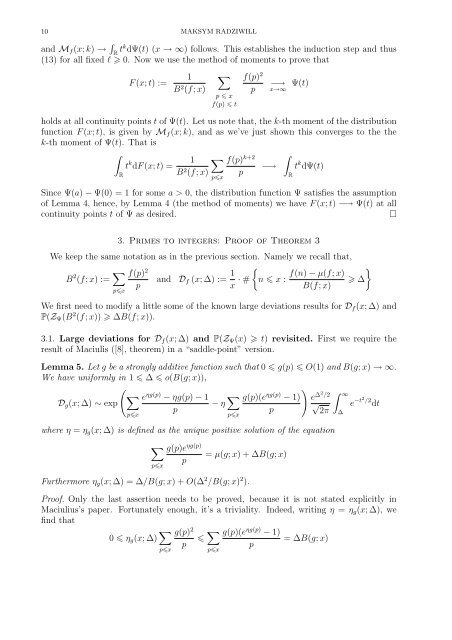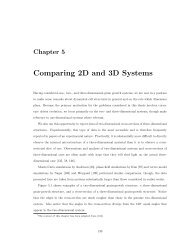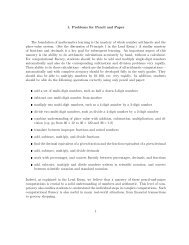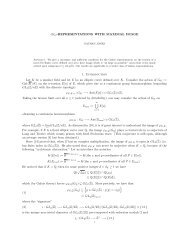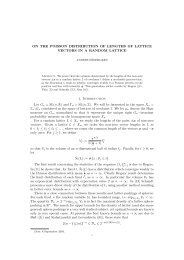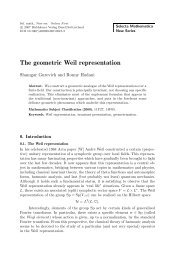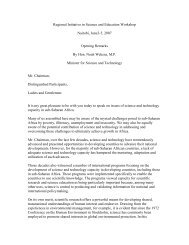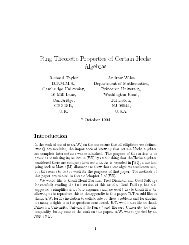You also want an ePaper? Increase the reach of your titles
YUMPU automatically turns print PDFs into web optimized ePapers that Google loves.
10 MAKSYM RADZIWI̷L̷L<br />
and M f (x; k) → ∫ R tk dΨ(t) (x → ∞) follows. This establishes the induction step and thus<br />
(13) for all fixed l 0. Now we use the method of moments <strong>to</strong> prove that<br />
F (x; t) :=<br />
1<br />
B 2 (f; x)<br />
∑<br />
p x<br />
f(p) t<br />
f(p) 2<br />
p<br />
−→<br />
x→∞<br />
holds at all continuity points t of Ψ(t). Let us note that, the k-th moment of the distribution<br />
function F (x; t), is given by M f (x; k), and as we’ve just shown this converges <strong>to</strong> the the<br />
k-th moment of Ψ(t). That is<br />
∫<br />
R<br />
t k dF (x; t) =<br />
1 ∑ f(p) k+2<br />
B 2 (f; x) p<br />
px<br />
−→<br />
∫<br />
R<br />
Ψ(t)<br />
t k dΨ(t)<br />
Since Ψ(a) − Ψ(0) = 1 for some a > 0, the distribution function Ψ satisfies the assumption<br />
of Lemma 4, hence, by Lemma 4 (the method of moments) we have F (x; t) −→ Ψ(t) at all<br />
continuity points t of Ψ as desired.<br />
□<br />
3. Primes <strong>to</strong> integers: Proof of Theorem 3<br />
We keep the same notation as in the previous section. Namely we recall that,<br />
B 2 (f; x) := ∑ f(p) 2<br />
and D f (x; ∆) := 1 {<br />
}<br />
p<br />
x · # f(n) − µ(f; x)<br />
n x : ∆<br />
B(f; x)<br />
px<br />
We first need <strong>to</strong> modify a little some of the known large deviations results for D f (x; ∆) and<br />
P(Z Ψ (B 2 (f; x)) ∆B(f; x)).<br />
3.1. Large deviations for D f (x; ∆) and P(Z Ψ (x) t) revisited. First we require the<br />
result of Maciulis ([8], <strong>theorem</strong>) in a “saddle-point” version.<br />
Lemma 5. Let g be a strongly additive function such that 0 g(p) O(1) and B(g; x) → ∞.<br />
We have uniformly in 1 ∆ o(B(g; x)),<br />
( ∑ e ηg(p) − ηg(p) − 1<br />
D g (x; ∆) ∼ exp<br />
− η ∑ )<br />
g(p)(e ηg(p) − 1) e ∆2 /2<br />
∫ ∞<br />
√ e −t2 /2 dt<br />
p<br />
p<br />
px<br />
px<br />
2π ∆<br />
where η = η g (x; ∆) is defined as the unique positive solution of the equation<br />
∑<br />
px<br />
g(p)e ηg(p)<br />
p<br />
= µ(g; x) + ∆B(g; x)<br />
Furthermore η g (x; ∆) = ∆/B(g; x) + O(∆ 2 /B(g; x) 2 ).<br />
Proof. Only the last assertion needs <strong>to</strong> be proved, because it is not stated explicitly in<br />
Maciulius’s paper. Fortunately enough, it’s a triviality. Indeed, writing η = η g (x; ∆), we<br />
find that<br />
0 η g (x; ∆) ∑ g(p) 2<br />
∑ g(p)(e ηg(p) − 1)<br />
= ∆B(g; x)<br />
p<br />
p<br />
px<br />
px


